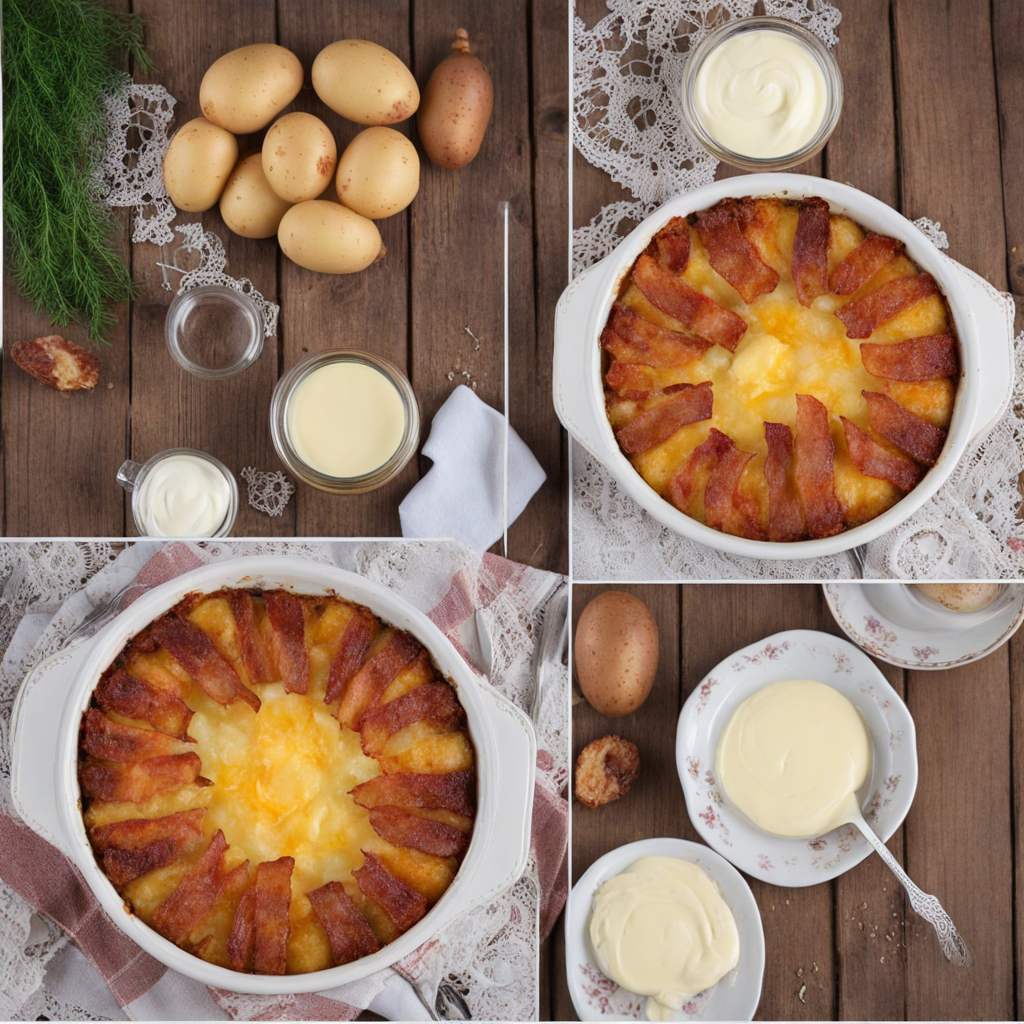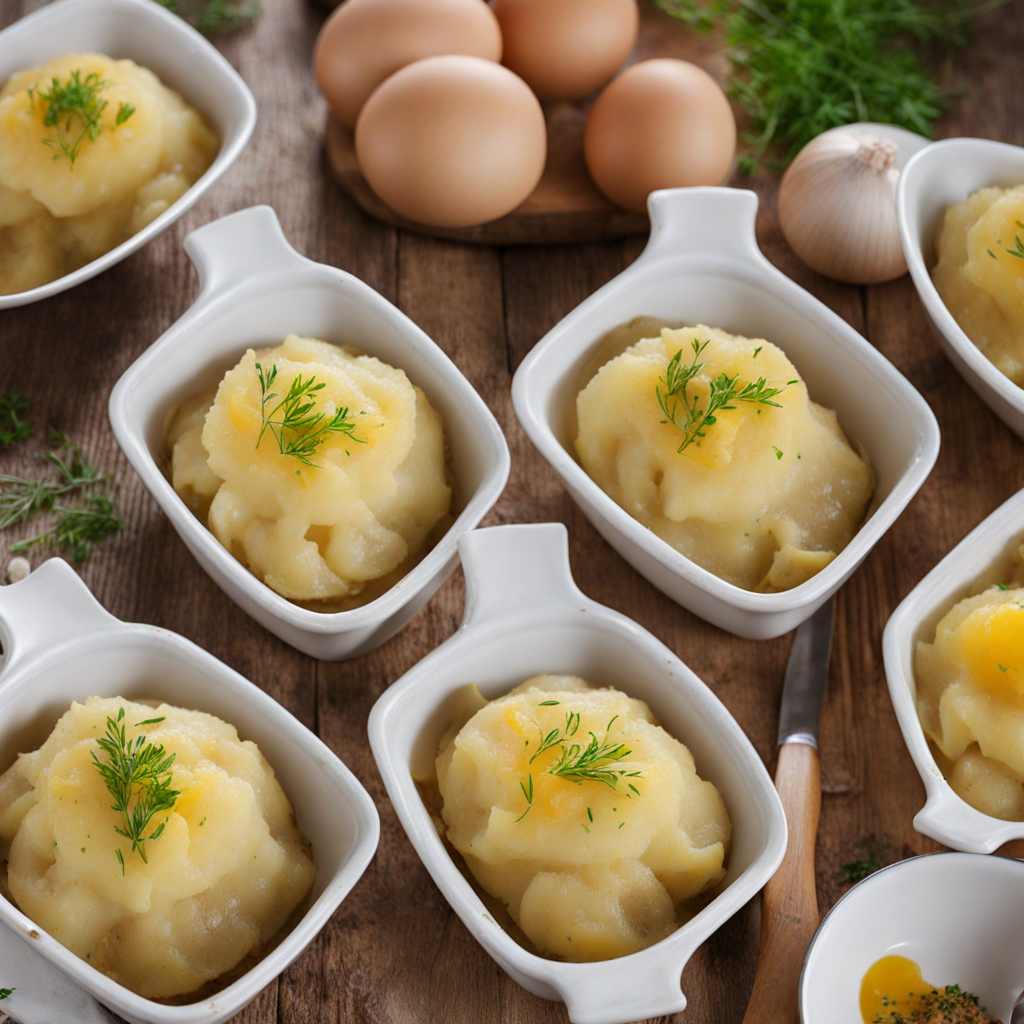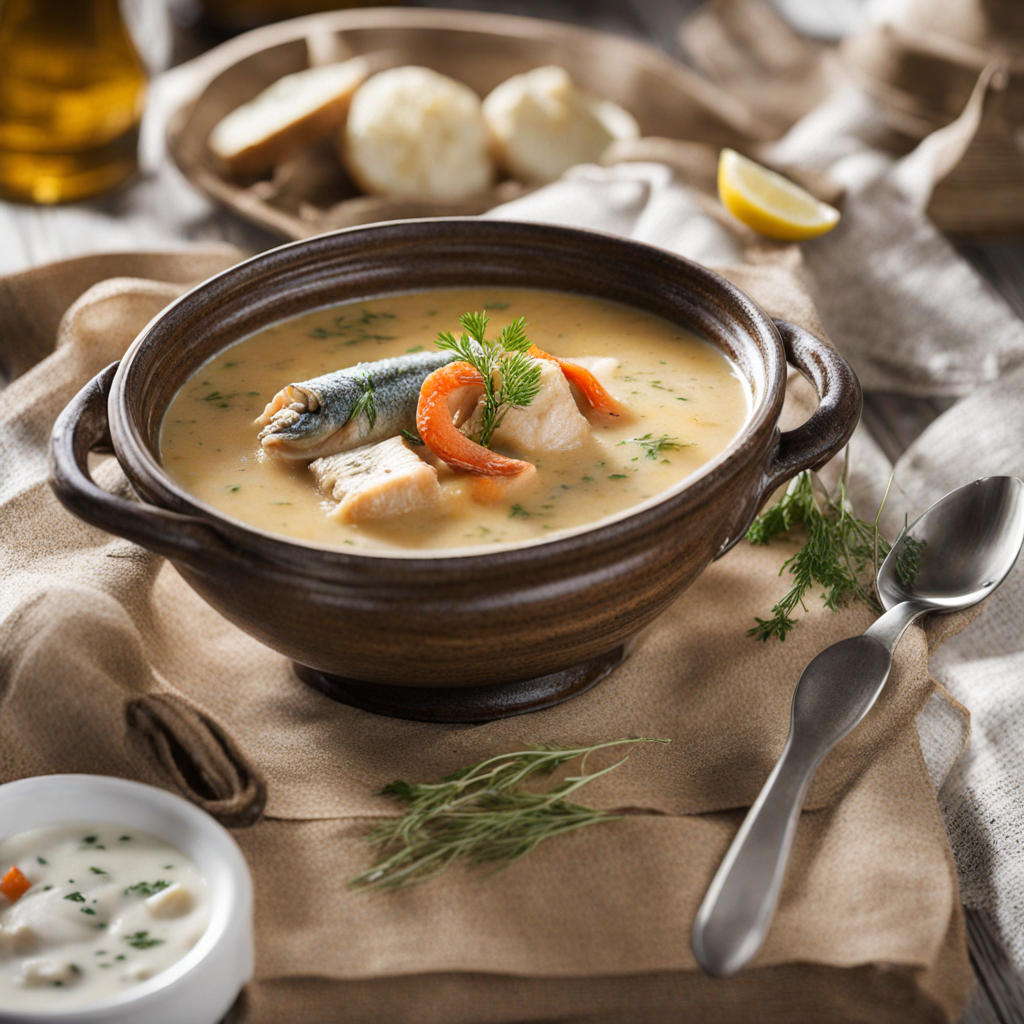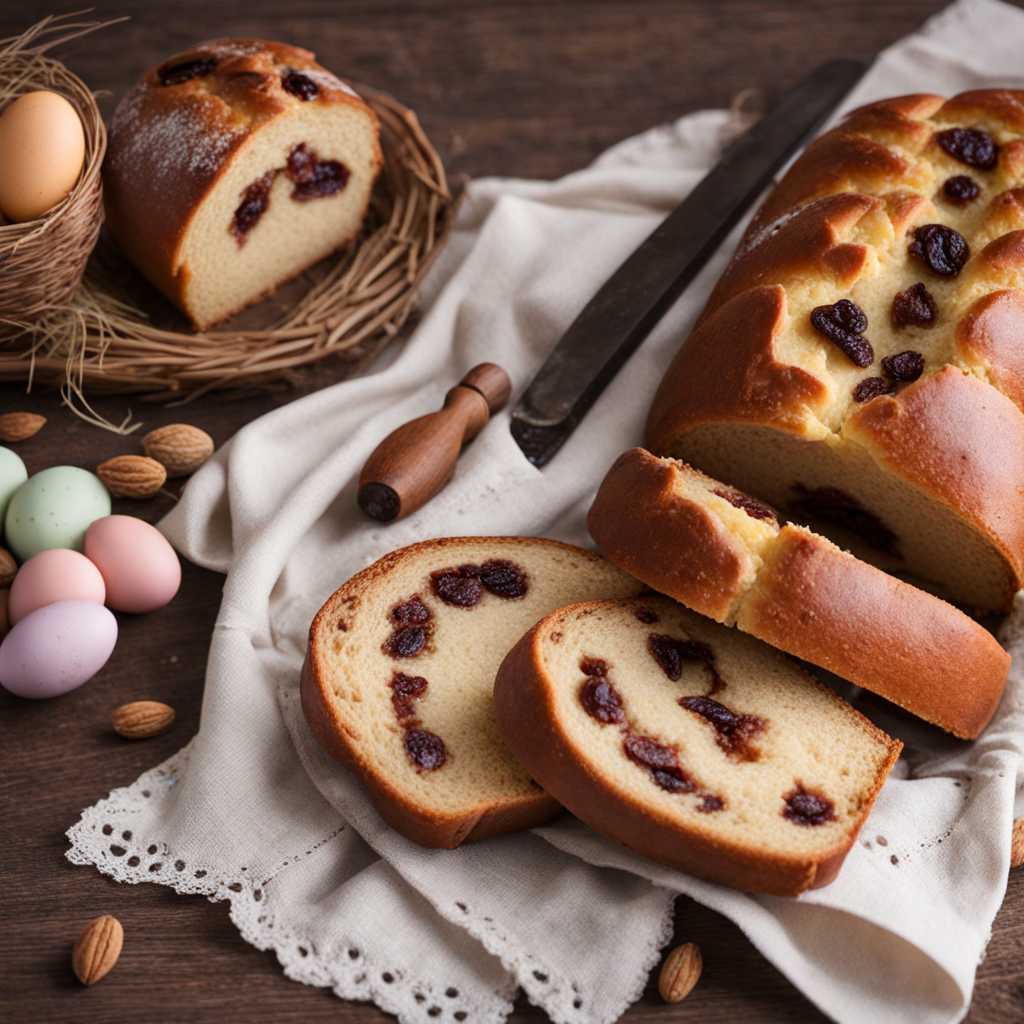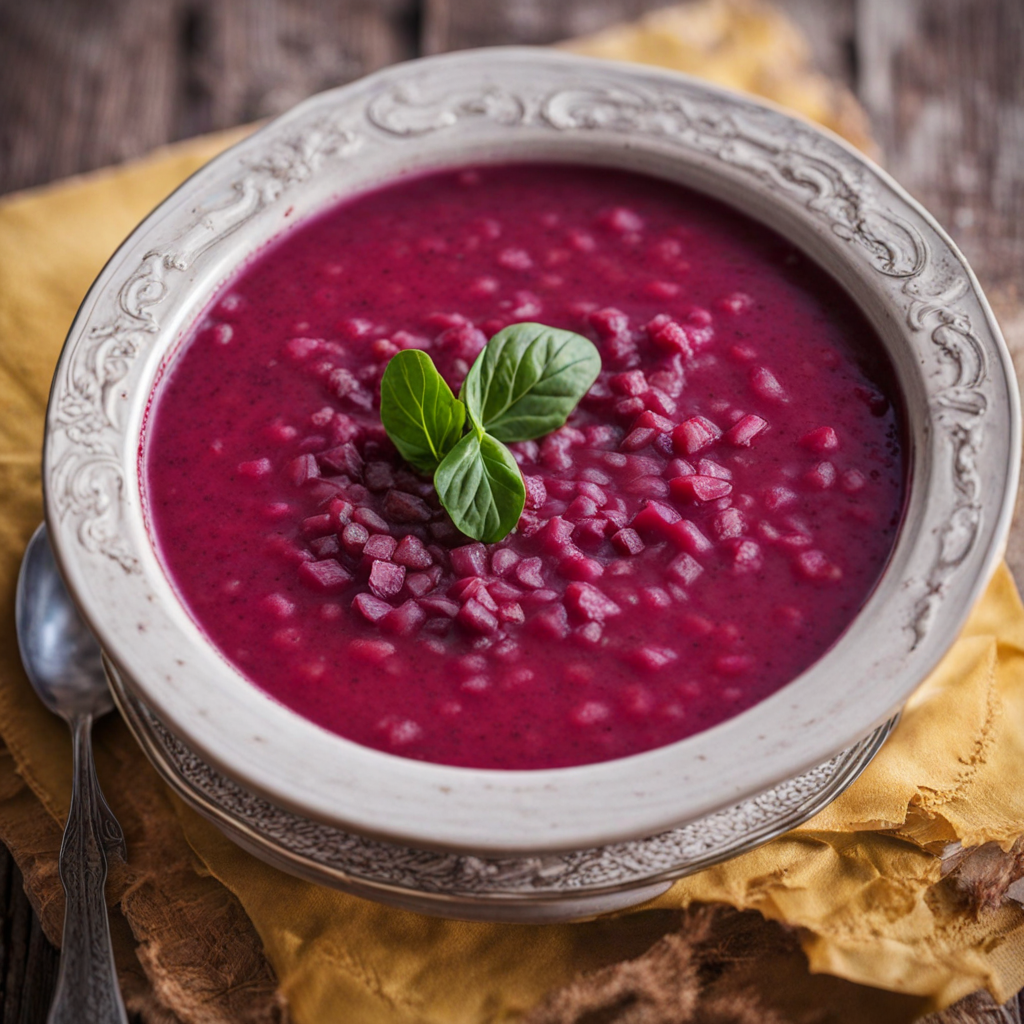Kugelis
Kugelis is a traditional Lithuanian dish that embodies the rustic charm of Eastern European cuisine. This savory potato pudding is primarily made from grated potatoes, onions, eggs, and bacon or smoked meat, all mixed together and baked to perfection. The use of simple, hearty ingredients reflects the agricultural roots of Lithuania, where potatoes are a staple. The dish is often seasoned with salt and pepper, allowing the natural flavors of the ingredients to shine through, while a hint of nutmeg can be added for an extra layer of warmth and depth. When you take a bite of kugelis, you’re met with a delightful contrast of textures. The outside is beautifully crispy and golden-brown, while the inside remains soft and creamy. The smoky flavor of the bacon or meat melds seamlessly with the earthy taste of the potatoes, creating a comforting and satisfying dish. Often served with a dollop of sour cream on top, kugelis becomes an even more indulgent experience, as the cool cream balances the warmth of the pudding. Kugelis is more than just a meal; it’s a dish steeped in tradition and shared among families during gatherings and celebrations. It showcases the Lithuanian ability to take humble ingredients and transform them into something truly special. Whether enjoyed as a main dish or a side, kugelis invites you to savor the essence of Lithuanian comfort food, offering a taste of the country’s rich culinary heritage.
How It Became This Dish
Kugelis: A Culinary Treasure of Lithuania Kugelis, a beloved dish in Lithuanian cuisine, is a hearty potato pudding that has woven itself into the fabric of the nation’s culinary identity. With roots that stretch back centuries, kugelis not only reflects the agricultural heritage of Lithuania but also serves as a symbol of community and tradition. This essay delves into the origins of kugelis, its cultural significance, and its evolution over time. Origins of Kugelis The origins of kugelis can be traced back to the agrarian lifestyle of the Lithuanian people. Potatoes were introduced to Lithuania in the late 18th century, following their arrival in Europe from the Americas. As a starchy and versatile crop, potatoes quickly became a staple food in the region, providing sustenance for the rural population. Kugelis is thought to have emerged as a practical solution to utilize the abundant potato harvests. Historically, the dish was prepared by grating raw potatoes and mixing them with eggs, milk, and sometimes meat, creating a dense batter that could be baked into a casserole-like pudding. The name "kugelis" is derived from the Yiddish word "kugel," which means "pudding" or "casserole." This connection underscores the broader influence of Jewish culinary traditions in Eastern Europe, which often incorporated similar ingredients and techniques. Cultural Significance Kugelis holds a special place in Lithuanian culture, transcending mere sustenance to become a dish that evokes nostalgia and community. It is often associated with family gatherings, celebrations, and traditional holidays. In many Lithuanian households, kugelis is a staple at festive occasions, such as Christmas Eve dinner, symbolizing warmth, comfort, and togetherness. The preparation of kugelis often becomes a communal activity, with family members gathering to grate potatoes, mix ingredients, and share stories. This practice has helped to preserve the dish’s significance across generations. Even in urban areas where traditional farming practices have waned, kugelis remains a cherished reminder of Lithuania's rural roots and agricultural heritage. Beyond its familial connections, kugelis has also become a point of national pride. It is often featured in Lithuanian restaurants and food festivals, showcasing the rich culinary traditions of the country to both locals and tourists. The dish embodies the concept of "šaltibarščiai" (cold beet soup) and "cepelinai" (potato dumplings), which together represent the trifecta of traditional Lithuanian comfort food. Evolution Over Time As Lithuania navigated through various historical changes—from the Polish-Lithuanian Commonwealth to Soviet occupation—the preparation and consumption of kugelis evolved. In the early 20th century, as Lithuania gained independence, there was a resurgence of interest in traditional foods, and kugelis experienced a revival. Home cooks began to experiment with regional variations, incorporating local ingredients and flavors into the recipe. During the Soviet era, access to certain ingredients became limited, leading to resourceful adaptations of kugelis. While the basic components remained the same, some families began to substitute or omit ingredients based on availability. However, the essence of kugelis as a hearty, comforting dish endured, serving as a source of solace during difficult times. In contemporary Lithuania, kugelis has experienced yet another transformation, as chefs and home cooks alike have begun to experiment with new interpretations. Some modern versions include gourmet twists, such as adding smoked meats, herbs, or even cheese, appealing to a younger generation while still honoring traditional flavors. The rise of the farm-to-table movement has also reinvigorated interest in locally sourced ingredients, ensuring that kugelis remains relevant in today’s culinary landscape. Recipe and Preparation The traditional preparation of kugelis is relatively simple but requires some effort and care. The most basic recipe involves the following ingredients: - 2 kg of potatoes - 4 eggs - 1 cup of milk - 1 onion (finely chopped) - Salt and pepper to taste - 200 grams of smoked bacon or other meats (optional) Preparation Steps: 1. Grate the Potatoes: Start by peeling and grating the potatoes using a coarse grater. This process can be labor-intensive, but it is essential for achieving the right texture. 2. Mix Ingredients: In a large bowl, combine the grated potatoes with eggs, milk, chopped onion, and seasonings. If using, add in the diced smoked bacon or meat for added flavor. 3. Bake: Pour the mixture into a greased baking dish and spread it evenly. Bake in a preheated oven at around 180°C (350°F) for approximately 1 hour, or until the top is golden brown and crispy. 4. Serve: Kugelis is typically served hot, often accompanied by sour cream, which adds a refreshing contrast to the dish's richness. Conclusion Kugelis is more than just a dish; it is a culinary embodiment of Lithuanian culture and history. Its origins rooted in the agrarian lifestyle of the Lithuanian people, kugelis has evolved over centuries, adapting to changing times while remaining a cherished comfort food. Whether enjoyed at family gatherings, special occasions, or simply as a hearty meal, kugelis continues to nourish both body and soul. Through its enduring presence on Lithuanian tables, kugelis invites us to reflect on the importance of tradition, community, and the simple pleasures of home-cooked meals. As Lithuania continues to embrace its culinary heritage, kugelis stands as a testament to the resilience and creativity of its people, ensuring that this treasured dish will remain a part of the nation’s identity for generations to come.
You may like
Discover local flavors from Lithuania



